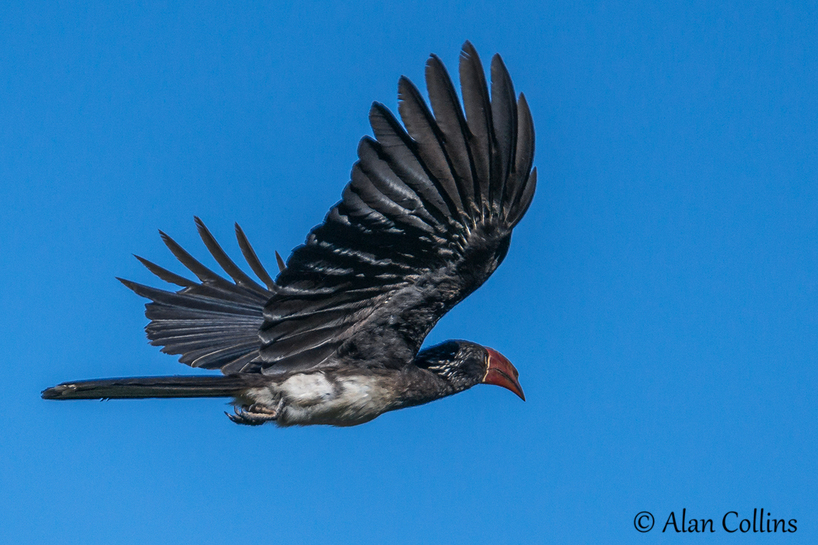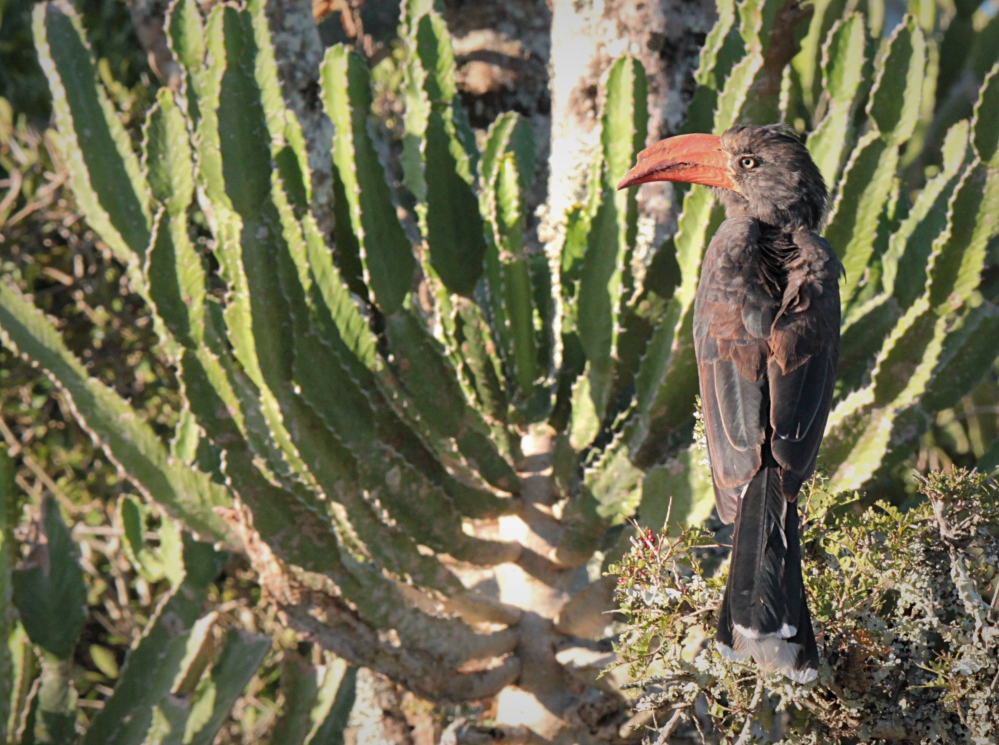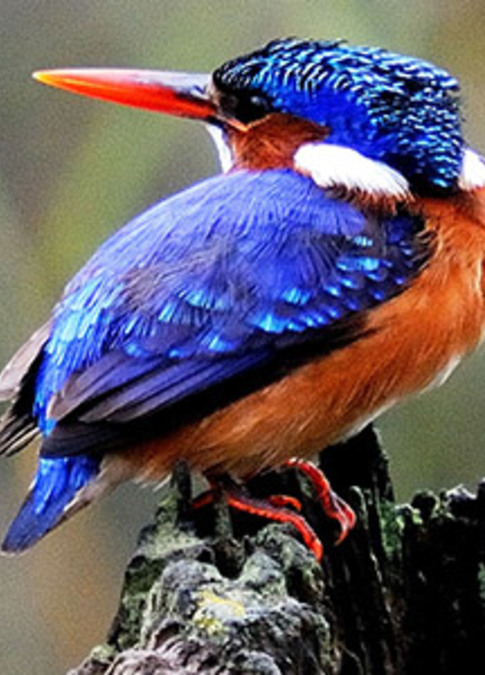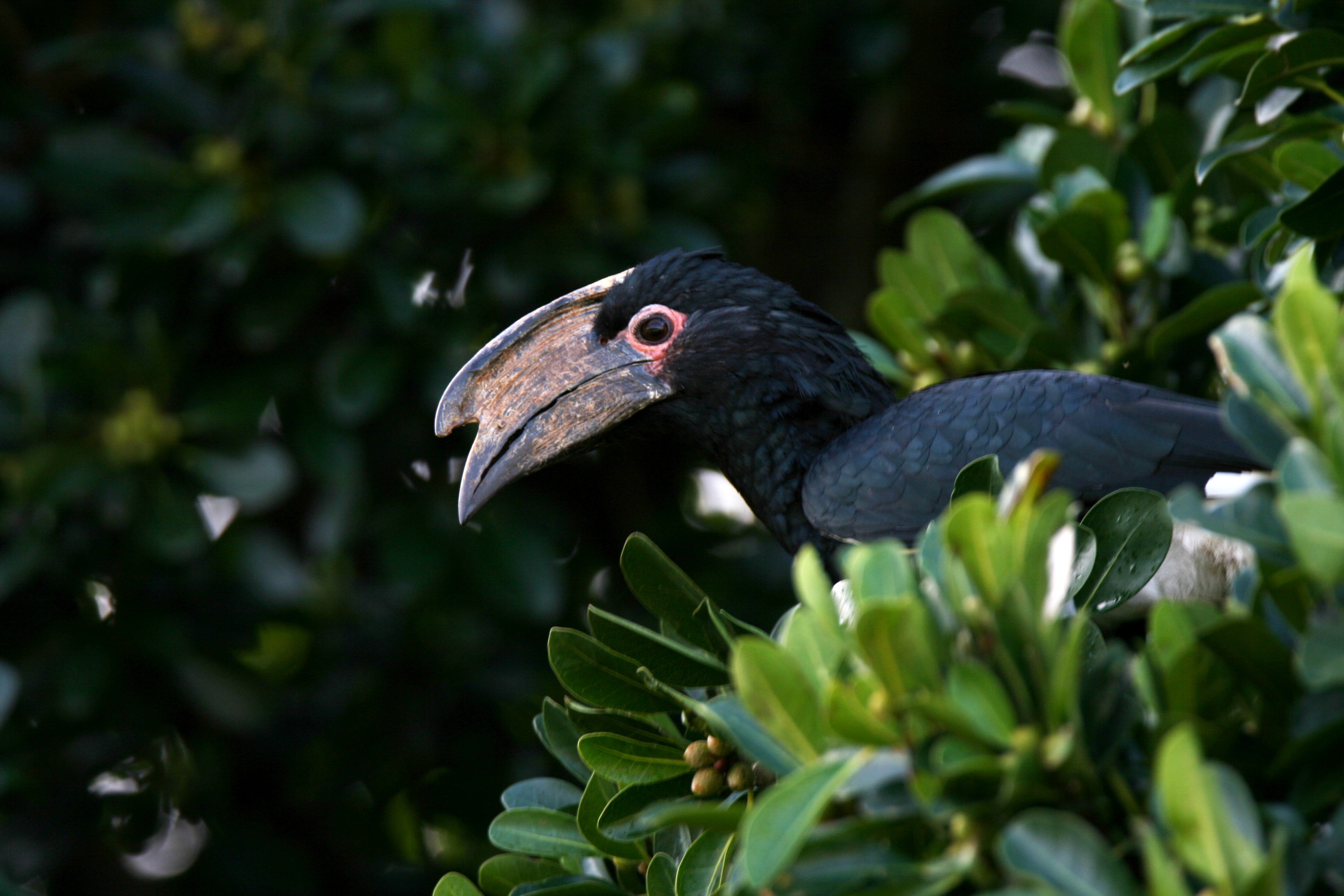Can You See Lion King Zazu at Kariega?

The most famous bird in the iconic Lion King film is Zazu, a red-billed hornbill who plays the flying wise mentor to Mufasa and later Simba. While you are likely to see hornbills on safari, you won't see Lion King Zuzu at Kariega as these birds are not endemic to our area.
There are 25 species of hornbills that live in Africa and most of their numbers are declining or, at best stable. The two species of hornbill that you will see at Kariega are the trumpeter (above) and the crowned hornbill (below).
Hornbills (Bucerotidae) are a family of birds found only in sub-Saharan Africa, tropical Asia and Melanesia. The name Bucerotidae comes from the Greek word “Buceros” which means “cow horn” and refers to the shape of their beak.
Zazu-Like Hornbills Found at Kariega

Kariega Game Reserve is home to over 300 bird species including the smaller crowned hornbill (above) and the larger trumpeter hornbill (below).
The crowned hornbill has a white belly, black or dark brown back and wings. The feathers on the tip of their tails are white. They are a medium-sized bird and usually reach up to 50 cm in length. This species has an orange to red beak and yellow eyes. Their casques, a hollow structure on top of their beak or upper mandible, are stocky and much smaller than their cousin the trumpeter hornbill. Crowned hornbills are often seen in flocks at Kariega and also like to perch on the tree euphorbias as seen in the picture above.
In the original animated version of the Lion King Zazu is depicted with a white chest, two-tone blueish grey feathers and a yellow and orange beak. In the 2019 photo-realistic and computer animated version of the Lion King Zazu has the correct black and white speckled feathers on his back, a white chest, red bill and yellow eyes.
Trumpeter hornbills are mostly found in the forests and dense woodlands at Kariega. They can be seen hopping and bouncing around on the tree branches in search of food such as fruit from fig and yellowwood trees. They are slightly larger than the crowned hornbill and can reach up to 65 cms in length. They have a black chest, head and back and a white belly. Their beaks are grey with a very large grey casque and they usually have brown eyes with pink skin around them. They have a varied diet and have even been seen at Kariega attacking weaver bird's nests to get hold of their chicks for lunch. The trumpeter hornbill has a very loud call and can be heard for kilometres, often in the early morning and evening. Their large casques on their beaks acts as resonator to amplify their calls.
Interesting Facts About Hornbills
These interesting facts apply to all hornbills, including Zazu seen in the Lion King.
- All hornbills have a characteristic long, down-curved bills which are often brightly coloured and sometimes have a casque.
- The hornbill family includes a total of 55 living species and embraces a wide variety of colours and sizes.
- The smallest hornbill is the black dwarf hornbill which weighs approximately 100 grams (3.6 oz) and the largest is the great hornbill which can weigh up to four kg (8.8 lbs).
- Males are always larger than females and also display more colour in their feathers, bill and casque.
- Hornbills are the only birds where the first and second neck vertebrae are fused together. This is thought to be an adaptation to assist them to carry their large bills.
- All hornbills are omnivorous, meaning they eat both plants and animals. They mostly feed on berries, fruits, insects and small animals like mice, snakes and lizards.
- When hornbills catch their food they jerk their heads back with their bills wide open in order for the food to be thrown down their throats.
- Hornbills are usually monogamous which means that a male and female will pair up for life.
- These birds usually make their nests in existing holes and crevices in trees high off the ground. They can also use the abandoned nests built by other bird species such as woodpeckers and barbets. This is one of the strategies they use to keep dangerous predators like mongooses, jackals and snakes away from their eggs and young.
Another interesting defense strategy used by hornbills during breeding is very unique and odd. When the pair have found a perfect nesting site in a tree, the female will enter this nest and close up the entrance with mud, droppings and fruit pulp. The males will sometimes help with this process too. The entrance to the nest will then be almost completely closed, except for the tiny space for the male to transfer food to the female and later on the chicks. The female will then start to moult, meaning she will loose all her feathers and then regrow them again. All bird species moult at least once a year but this is usually a slow and continuous process rather than all at once. This is a very dangerous time for this mother bird as she is not able to fly. Another disadvantage of this type of nesting is that if the male dies, the female and chicks are left without food and will starve to death inside the nesting cavity. The male is their only source of a food supply.
Did you enjoy seeing Zazu in the 2019 version of the Lion King? Do you find hornbills a fascinating bird species? Did you see any hornbills while on safari at Kariega Game Reserve? If so, please share your photos and videos with us via Facebook, Instagram and Twitter. Don't forget to enter your favourite Kariega images into our 2020 Facebook Photo Competition and our recently added Instagram Photo Competition. You could win a two night stay for two people at Ukhozi Lodge in both competitions.
Photos thanks to guest Alan Collins and guide Jo Haesslich.









